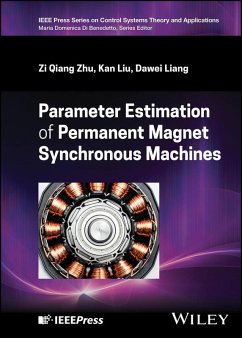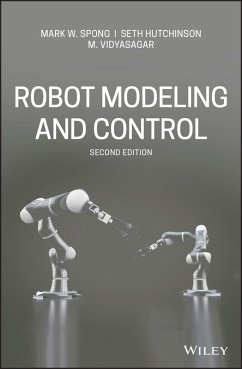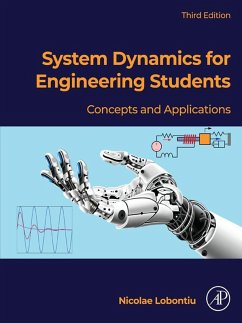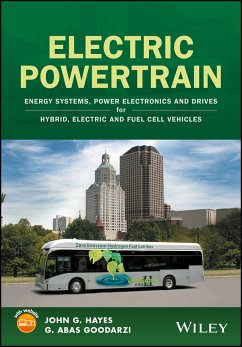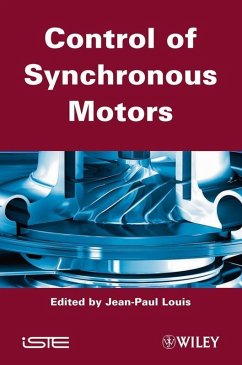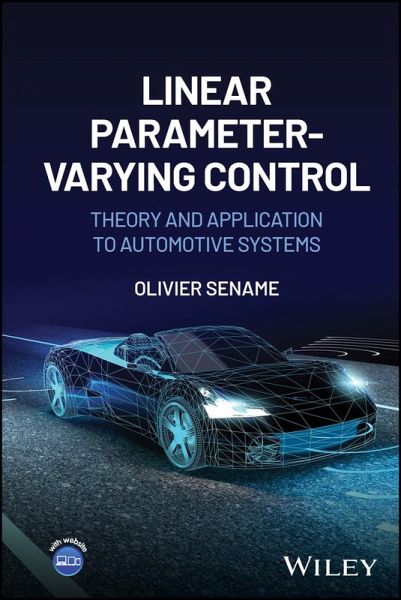
Linear Parameter-Varying Control (eBook, ePUB)
Theory and Application to Automotive Systems
Versandkostenfrei!
Sofort per Download lieferbar
116,99 €
inkl. MwSt.
Weitere Ausgaben:

PAYBACK Punkte
0 °P sammeln!
An authoritative new exploration of the latest theoretical and applied advances in Linear Parameter-Varying systemsIn Linear Parameter-Varying Control: Theory and Application to Automotive Systems, distinguished researcher Dr. Olivier Sename delivers a comprehensive and up-to-date discussion of the theoretical aspects and real applications of Linear Parameter-Varying (LPV) control, with a strong focus on systems theory and in real automotive systems. The author covers the primary methods used to model, control, and analyze LPV systems, and illustrates how to model those systems using examples....
An authoritative new exploration of the latest theoretical and applied advances in Linear Parameter-Varying systems
In Linear Parameter-Varying Control: Theory and Application to Automotive Systems, distinguished researcher Dr. Olivier Sename delivers a comprehensive and up-to-date discussion of the theoretical aspects and real applications of Linear Parameter-Varying (LPV) control, with a strong focus on systems theory and in real automotive systems. The author covers the primary methods used to model, control, and analyze LPV systems, and illustrates how to model those systems using examples.
This book covers developing adaptive LPV control using the provided recipes as guides and contextual aids as well as discovering effective methods to design LPV controllers that have already been validated through real applications.
Readers will also find:
Perfect for researchers and students with an interest in vehicle dynamics, Linear Parameter-Varying Control will also benefit postgraduate and PhD students, control engineers, and academics teaching control theory and applications courses.
In Linear Parameter-Varying Control: Theory and Application to Automotive Systems, distinguished researcher Dr. Olivier Sename delivers a comprehensive and up-to-date discussion of the theoretical aspects and real applications of Linear Parameter-Varying (LPV) control, with a strong focus on systems theory and in real automotive systems. The author covers the primary methods used to model, control, and analyze LPV systems, and illustrates how to model those systems using examples.
This book covers developing adaptive LPV control using the provided recipes as guides and contextual aids as well as discovering effective methods to design LPV controllers that have already been validated through real applications.
Readers will also find:
- A thorough introduction to vehicle dynamics control in automated vehicles, as well as suspension control
- Comprehensive explorations of LPV systems modelling, including dynamical systems
- Practical discussions of the properties of LPV systems, including controllability, observability, and stability
- Complete treatments of LPV systems control, including state feedback control and dynamic output feedback LPV control
Perfect for researchers and students with an interest in vehicle dynamics, Linear Parameter-Varying Control will also benefit postgraduate and PhD students, control engineers, and academics teaching control theory and applications courses.
Dieser Download kann aus rechtlichen Gründen nur mit Rechnungsadresse in D ausgeliefert werden.






